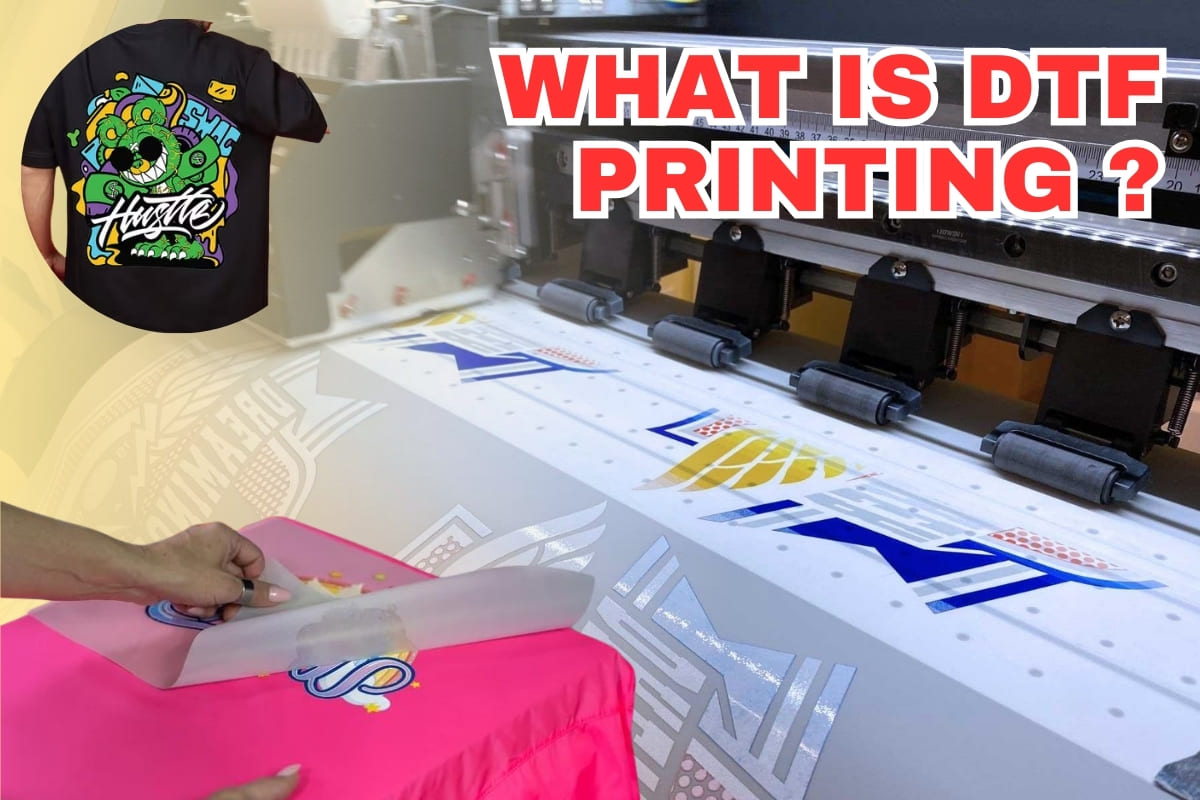Direct-to-Film (DTF) printing is an innovative digital printing technique that allows for high-quality, detailed designs to be transferred onto various fabrics and materials. This method has gained popularity due to its versatility and the ability to produce vibrant, durable & high quality prints. Here’s an overview of DTF printing:
Steps in DTF Printing:
-
Design Creation:
- The design is created using graphic design software (e.g., Adobe Photoshop, Illustrator, or CorelDRAW).
- The digital design can include complex images, gradients, and multiple colors.
- Save your designs in PNG format.
-
Printing:
- The design is printed onto a special film using a DTF printer & specially designed software equipped with specialized inks, typically CMYK and white inks.
- The printer applies a layer of white ink as a base to ensure opacity and vibrant colors, especially on dark fabrics.
-
Powder Application:
- While the ink is still wet, a hot-melt TPU adhesive powder is applied to the printed film.
- The powder sticks to the wet ink, forming a bond that will adhere to the fabric during heat pressing.
-
Curing:
- The printed film with the TPU powder is cured or dried using a heat source, such as an oven or heat press machine.
- This step ensures the adhesive powder melts and bonds properly with the ink.
-
Transfer:
- The cured film is placed onto the fabric or material where the design is to be transferred.
- A heat press machine is used to apply heat and pressure, transferring the design from the film onto the fabric.
- The typical temperature and pressing time can vary, but it usually ranges from 160-180°C (320-356°F) for about 10-15 seconds.
-
Peeling:
- After pressing, the film is allowed to cool down.
- The film is then peeled off, leaving the printed design adhered to the fabric.
Advantages of DTF Printing:
- Versatility: Can be used on a wide range of fabrics, including cotton, polyester, blends, and even non-textile surfaces.
- Detail and Color: Produces high-resolution prints with vivid colors and intricate details.
- Durability: The prints are long-lasting and can withstand washing and wear.
- No Pretreatment: Unlike some other methods like DTG (Direct-to-Garment), DTF does not require pretreatment of the fabric.
- Soft Feel: The prints have a soft hand feel, making them comfortable to wear.
Applications:
- Custom Apparel: T-shirts, hoodies, jackets, and other garments.
- Accessories: Bags, caps, and other fabric accessories.
- Promotional Items: Can be used to print on a variety of promotional merchandise.
- Small and Large Runs: Suitable for both small custom orders and larger production runs.
Considerations:
- Equipment Cost: Initial investment in a DTF printer and related equipment can be high.
- Learning Curve: There can be a learning curve to perfecting the printing and transfer process.
- Environmental Factors: The process involves handling powders and inks, which require proper ventilation and safety precautions.
DTF printing offers a flexible and high-quality alternative to traditional printing methods, making it an attractive option for businesses and individuals looking to produce custom, detailed designs on a variety of materials.









